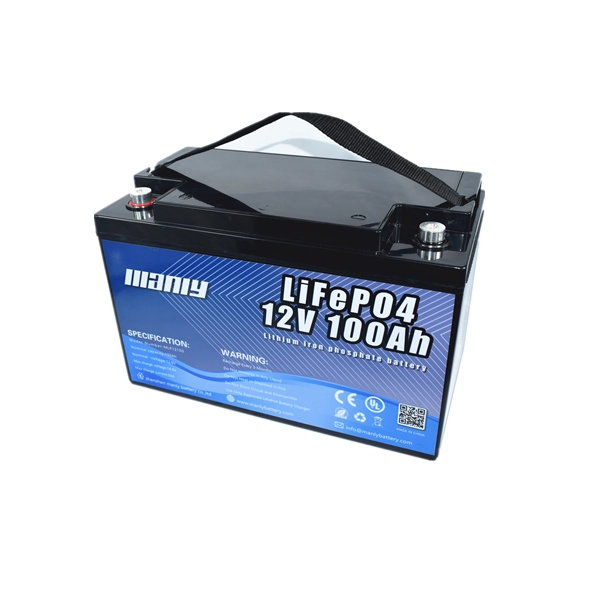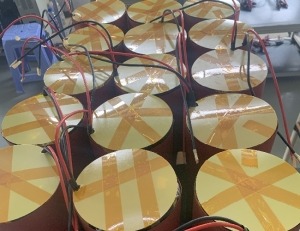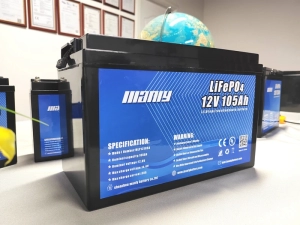As baterias de lítio têm memória de carga
Índice
- As baterias de lítio têm memória de carga

O que exatamente é o efeito de memória da bateria?
The efeito de memória da bateria is when a battery seems to "remember" its previous charging cycles. This means the battery might not use all of its energy over time, reducing its total capacity. Originally noticed in older batteries like nickel-cadmium (NiCd) and nickel-metal hydride (NiMH), this effect causes batteries to deliver less power than they actually have.Principais diferenças entre o efeito memória e outros problemas de bateria
Understanding how the memory effect differs from other battery problems is important:- Retenção de Carga: The memory effect directly affects how much charge a battery can store. While issues like self-discharge cause a battery to lose power over time, they don't reduce the battery's total capacity like the memory effect does.
- Padrões de carregamento: The battery memory effect is linked to repetitive charging patterns. If you frequently charge the battery after only partial use, it may "remember" this shorter cycle and not utilize its full capacity in the future.
- Reversibilidade: One key aspect of the memory effect is that it's often reversible. Performing several full charge and discharge cycles can reset the battery's memory. In contrast, other issues may be permanent or require special treatments.
- Mudanças Químicas: The problems associated with the memory effect battery stem from changes in the battery's internal materials, such as alterations in the crystal structure of the electrodes. Other battery issues might arise from different chemical reactions or external factors like temperature.
Efeito memória em baterias de íon de lítio
When it comes to modern lithium ion batteries, the memory effect is not as common as it is in older battery technologies. However, this doesn’t mean that lithium ion batteries are completely free from it. Under specific conditions, lithium ion batteries, especially those using lithium iron phosphate (LiFePO4) chemistry, can still experience something similar to the battery memory effect.Compreendendo o efeito da memória da bateria de íon de lítio
For most lithium ion batteries, like those made with NMC or LCO, the memory effect is rare. These batteries generally degrade over time due to natural wear, rather than remembering a specific charging pattern. However, in lithium iron phosphate (LiFePO4) batteries, the voltage curve is very flat, which can confuse the system that measures the state of charge (SoC). This flat voltage curve, when paired with frequent partial charging and discharging, may cause the battery to appear as though it is suffering from a battery memory effect.This effect can lead to errors in how much charge the system thinks the battery holds, resulting in incorrect estimations of the battery's charge level. While the overall impact on capacity is not as significant as in nickel-based batteries, this issue can cause some problems with the battery’s performance, especially in complex systems like electric vehicles.Causas do efeito de memória da bateria de íons de lítio
- Ciclos de carga incompletos: As baterias de íon de lítio que são carregadas de forma consistente após uma descarga apenas parcial podem começar a apresentar capacidade reduzida, imitando o efeito memória da bateria. Isso não significa que eles tenham uma memória verdadeira como as químicas de baterias mais antigas, mas o comportamento é semelhante.
- Altas temperaturas operacionais: O calor é outro fator que pode agravar esse problema. A exposição das baterias de íon de lítio a altas temperaturas durante o carregamento ou descarregamento pode acelerar reações químicas dentro da bateria, o que pode aumentar a chance de ocorrer um efeito semelhante ao de memória. A bateria torna-se menos eficiente e a sua capacidade de manter uma carga completa é reduzida.
- Sobrecarga e descarga excessiva: Embora as baterias de íon de lítio tenham proteção integrada para evitar sobrecarga ou descarga excessiva, condições extremas ainda podem levar à perda de capacidade a longo prazo. A exposição repetida a tais condições pode fazer com que a bateria pareça ter um efeito memória, fornecendo apenas uma carga limitada.
Estratégias de mitigação para o efeito de memória da bateria de íons de lítio
There are several strategies to minimize the risk of memory effect in lithium ion batteries:- Execute ciclos completos de carga: De vez em quando, é uma boa ideia deixar a bateria descarregar completamente antes de carregá-la novamente. Isso pode ajudar a recalibrar o sistema e redefinir a capacidade da bateria.
- Evite altas temperaturas: Carregar ou descarregar uma bateria em condições muito quentes pode reduzir sua eficiência e vida útil. Mantenha as baterias em uma temperatura estável e moderada para obter o desempenho ideal.
- Manutenção regular: Ocasionalmente, executar suas baterias de íon de lítio em um ciclo completo de carga e descarga, um processo às vezes chamado de condicionamento da bateria, pode ajudar a manter sua saúde e reduzir os efeitos que imitam o efeito memória.
Efeito memória em outros tipos de baterias
While lithium ion batteries may only experience a limited memory effect, it’s much more prominent in older battery technologies. Here’s how it affects various types of batteries:Baterias de níquel-cádmio (NiCd)
Nickel-cadmium (NiCd) batteries are notorious for their memory effect. If these batteries are regularly charged before they are fully discharged, they "remember" the shorter charge cycles and lose some of their total capacity. This happens because the crystal structure in the battery's electrodes changes over time with repeated partial charges. As a result, the battery gradually becomes unable to provide its full energy capacity, forcing users to recharge more frequently.To prevent the battery memory effect in NiCd batteries, users are encouraged to fully discharge them before recharging. This practice helps reset the battery’s memory and restore its full capacity.Baterias de níquel-hidreto metálico (NiMH)
Nickel-metal hydride (NiMH) batteries also suffer from a memory effect, although not as severely as NiCd batteries. The problem occurs when the battery is charged after partial use, leading to a gradual reduction in the battery’s overall capacity. However, NiMH batteries have been improved over the years to reduce this issue, making it less common.Occasionally fully discharging and then recharging these batteries can help reduce the memory effect and prolong their life. It’s also important to store these batteries in cool, dry places to maintain their performance.Baterias de chumbo-ácido
Lead-acid batteries, commonly used in vehicles and backup power systems, can also experience a form of memory effect. This usually happens when the battery is consistently not fully charged, causing sulfate crystals to form on the battery plates. These crystals reduce the battery’s capacity and efficiency over time. While not the same as the battery memory effect seen in NiCd or NiMH batteries, this problem is sometimes referred to as a "sulfation memory."Regularly charging lead-acid batteries to their full capacity and performing periodic maintenance, such as equalizing charges, can help prevent this issue.Pilhas Alcalinas
Alkaline batteries, which are non-rechargeable, typically do not suffer from a memory effect. However, rechargeable alkaline batteries can, under certain circumstances, develop a memory-like problem if not fully discharged before being recharged. Following the manufacturer’s guidelines for charging can help maintain their performance.Baterias Zinco-Carbono
Zinc-carbon batteries are another type of non-rechargeable battery that do not experience a memory effect. Since these batteries are designed for single use, they are discarded once their energy is depleted. Proper storage and usage can ensure they last as long as possible, but they do not suffer from capacity loss due to charging patterns.Impacto do efeito memória no desempenho da bateria ao longo do tempo
The memory effect can have several negative impacts on battery performance, especially over time. As batteries lose their capacity due to this effect, their efficiency and usability decline. Below are some of the key ways the battery memory effect impacts overall performance:Capacidade reduzida
One of the most noticeable effects of the memory effect is the reduction in the battery's overall capacity. When a battery "remembers" shorter charging cycles, it begins to store less energy than its full potential. This can lead to the battery running out of charge faster, requiring more frequent recharging. For example, a phone or laptop battery affected by the memory effect might last only a fraction of the time it used to, which can be frustrating for users who depend on long-lasting battery life.Tempo de uso mais curto
As a result of reduced capacity, the battery memory effect also shortens the time a battery can be used before it needs to be recharged. Devices like laptops, smartphones, or cordless tools may operate for much shorter periods, which can be highly inconvenient, especially when constant access to charging isn’t possible. This shortened usage time can be particularly disruptive in critical applications such as medical devices or emergency backup systems.Maior frequência de carregamento
With the battery memory effect, users often find themselves charging their batteries more frequently. This increased charging frequency not only adds inconvenience but can also accelerate wear and tear on the battery. Lithium ion batteries, for example, have a limited number of charge cycles, so frequent recharging due to memory effects can shorten the battery's lifespan even more quickly.Menor eficiência
As batteries lose their ability to hold a full charge, they also become less efficient. A battery affected by the memory effect might take longer to charge, but then discharge more quickly than normal. This inefficiency can lead to higher energy costs, especially for industrial or commercial operations that rely heavily on battery-powered equipment. The loss of efficiency can also mean more frequent interruptions in productivity when batteries need to be recharged or replaced.Potencial de superaquecimento
The increased frequency of charging, combined with reduced efficiency, can sometimes cause batteries to overheat. This risk is particularly concerning for lithium ion batteries, which, if exposed to high temperatures or improper charging, can become unstable. Memory effect problems could indirectly increase the risk of overheating, particularly in devices that are used intensively and require frequent recharges. Proper battery management is essential to avoid this dangerous outcome.Prevenindo o efeito memória nas baterias
Although the memory effect can negatively impact battery performance, there are several ways to prevent or reduce this issue. These preventive measures help ensure that batteries maintain their full capacity and perform optimally for as long as possible.Execute ciclos completos de carga
One of the most effective ways to prevent the battery memory effect is to regularly let the battery discharge completely before recharging it. This helps to reset the battery’s capacity and prevent it from "remembering" shorter charging cycles. For example, allowing your phone or laptop battery to run down to a low level before fully charging it can help extend its lifespan.It’s important to note that this practice is especially useful for older battery types like NiCd and NiMH, but even lithium ion batteries can benefit from occasional full charge cycles to recalibrate their charging systems.Evite carregamento parcial
Consistently charging a battery when it is only partially depleted can increase the risk of developing a memory effect battery. By waiting until the battery's charge is sufficiently low before plugging it in, you can help prevent this effect from taking hold. For instance, rather than charging your device every time it drops to 80% or 90%, wait until it falls below 30% or 20% for a more complete cycle.This is particularly relevant for batteries used in electric vehicles, tools, or other equipment that undergo frequent charging. Following proper charging patterns will maximize the battery’s useful life.Use equipamento de carregamento adequado
Using the correct charger for your device is another critical step in avoiding the battery memory effect. Chargers are specifically designed to provide the appropriate voltage and current for different types of batteries. Using a low-quality or incompatible charger can lead to improper charging, which might increase the likelihood of memory issues.Stick to the manufacturer’s recommended charging equipment to ensure your battery receives the correct charge. For lithium ion batteries, in particular, this can prevent capacity loss and extend the battery's performance over time.Evite temperaturas extremas
Extreme heat or cold can exacerbate battery problems, including the battery memory effect. Batteries operate best at moderate temperatures, and exposing them to harsh conditions can cause chemical reactions that damage the internal structure. High temperatures can accelerate the chemical degradation inside the battery, while freezing temperatures may reduce the battery's ability to hold a charge.To prevent this, avoid leaving batteries in environments where they may be exposed to extreme conditions, such as inside a hot car or in direct sunlight. Keeping the battery within a safe temperature range helps maintain its health and performance.Calibre sua bateria regularmente
Many modern devices have built-in battery management systems, but performing manual calibration from time to time can still be helpful. Calibrating involves allowing the battery to fully discharge and then recharging it to 100%. This practice resets the device’s battery management system and helps provide more accurate readings of the battery’s capacity, reducing the impact of the battery memory effect.For devices like laptops or smartphones, this calibration can be done every few months to keep the battery working properly and ensure accurate charge level reporting.Siga as orientações do fabricante
Manufacturers provide specific instructions on how to best care for batteries. Following these guidelines can help prevent the memory effect and extend the battery’s lifespan. Instructions might include details on charging cycles, temperature limits, and storage conditions. By adhering to these recommendations, you can reduce the risk of developing the battery memory effect and other common battery issues.Utilize ferramentas de gerenciamento de bateria
Many devices come with built-in battery management tools that optimize charging cycles and help prevent memory issues. These tools monitor the battery’s charge level, temperature, and overall health, making it easier to avoid problems like the memory effect. Check your device’s settings to see if it has any battery optimization features and make sure they are enabled for the best performance.Não perca nossas baterias de lítio premium! Faça pedidos a granel na MANLY Battery e economize.




















